BY TYLER ROGOWAY AND JAMIE HUNTER
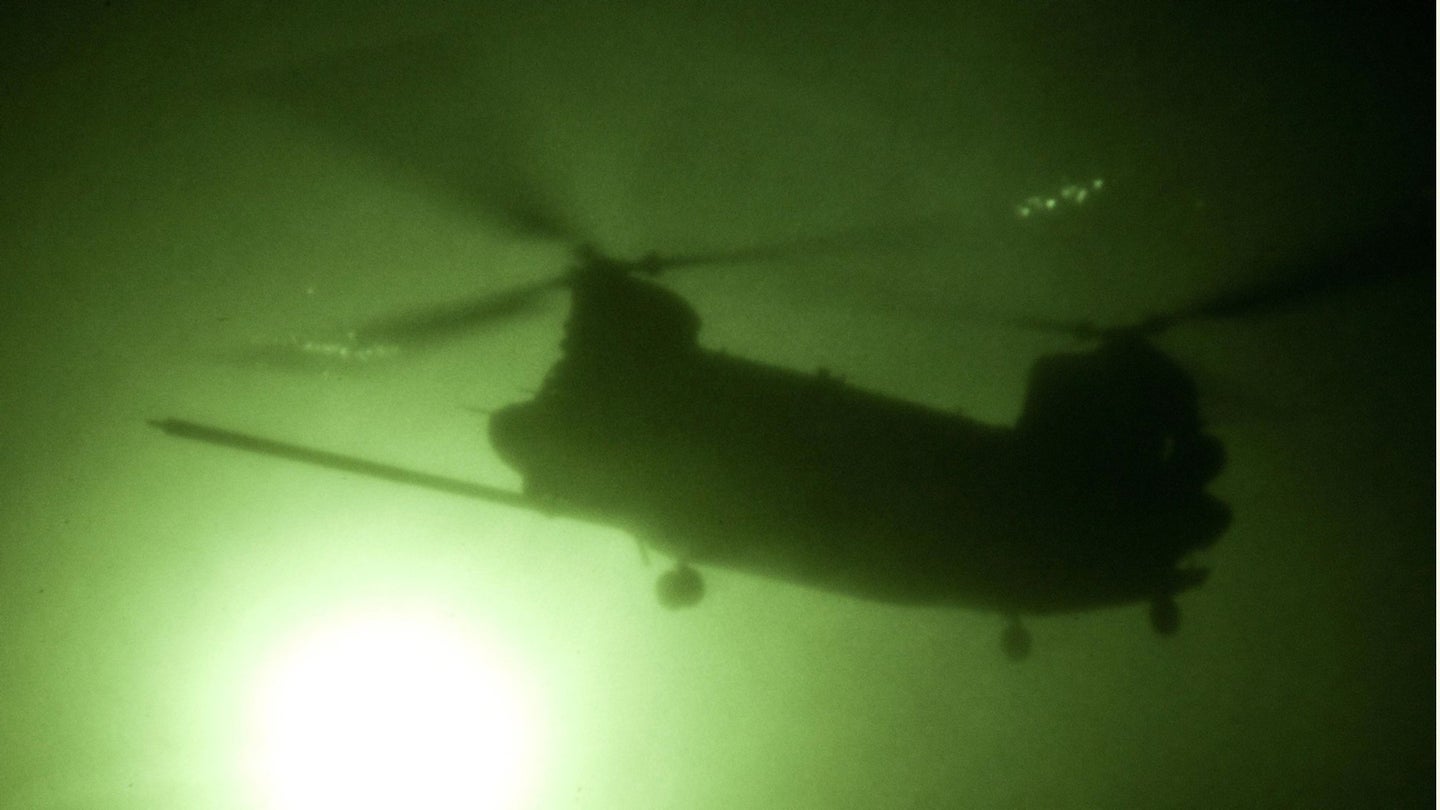
When U.S. Special Operations forces raided Osama Bin Laden’s compound in Abbottabad, Pakistan, now a decade ago, years of special training and experience combined to overcome a host of potentially devastating events, including the crash of a specially equipped Black Hawk helicopter and threats from the Pakistani Air Force, to ultimately achieve the desired end result of the mission. Retired U.S. Army Chief Warrant Officer Douglas Englen flew with the elite 160th Special Operations Aviation Regiment and played a critical role in Operation Neptune's Spear. He credits skills he learned while taking part in an elite U.S. Marine Corps training course as being critical to the success of the mission.
Englen piloted an MH-47G Chinook during the operation, helping to bring in a quick reaction force to the compound after one of two Black Hawks crashed. Having arrived on the scene, his crew joined the effort to help load up Bin Laden’s body and items of potential intelligence interest from the compound, before departing for Afghanistan.
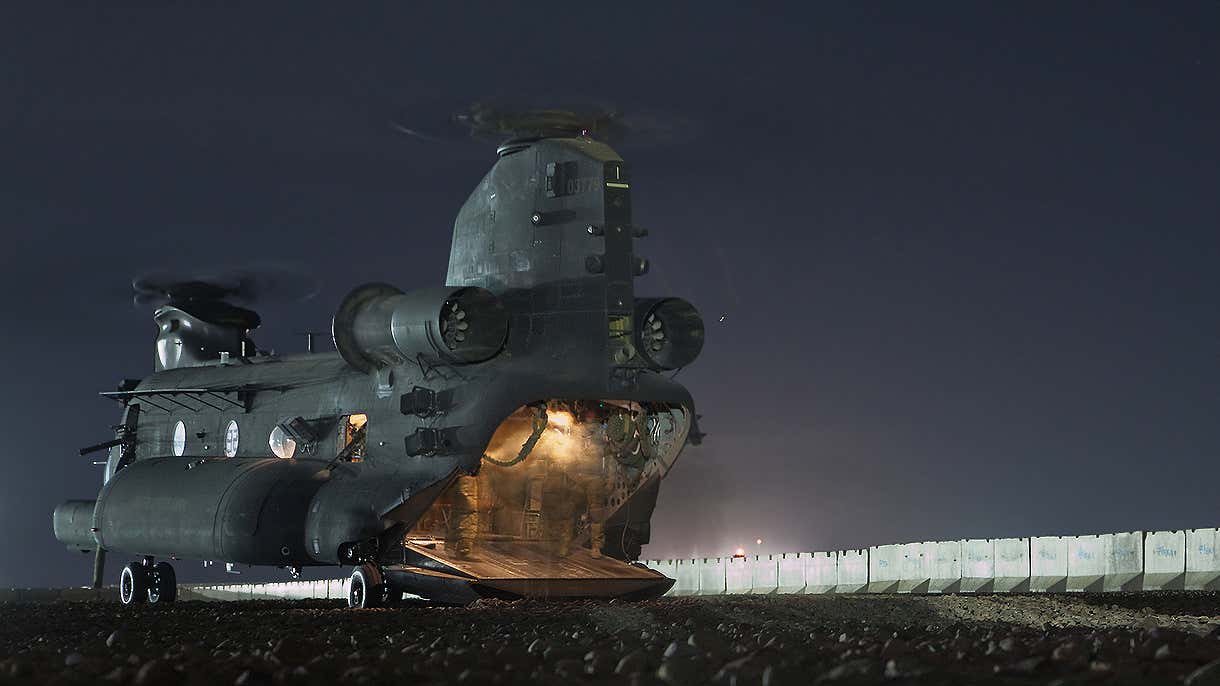
US ARMY
An MH-47 spins up for a mission.
However, Englen and his fellow crew members then faced a further, potentially lethal, threat. He disclosed last year that as his MH-47 and the remaining helicopters fled the scene, he was faced with a Pakistan Air Force F-16 Viper, which he says attempted to “engage” his MH-47G at least three times. This is from our previous report on the revelations:
After loading up Bin Laden's body and other items of potential intelligence value from the compound, the raiding force began to make its way back to Afghanistan. Englen does not say exactly when during the exfiltration it occurred or where, but he says that one of Pakistan's American-made F-16 Viper fighter jets was clearly hunting for the remaining helicopters and attempted to "engage" his MH-47G at least three times.
“It was as an electronic fight. A missile never left the rail. So I was able to evade him electronically. That’s all I’ll say," he said. "But, he was searching and hunting for me, and three times came very close to actually launching a missile."
Englen does not say what type of electronic warfare systems he employed to evade the fighter jet. It is known that the MH-47G has some form of radio-frequency countermeasures system, in addition to infrared and laser missile warning receivers and countermeasures. Quade also says that the 160th's Chinooks had just received new electronic warfare equipment before the raid and that Englen had helped certify those systems and training crews to use them. The Night Stalkers Chinooks are without a doubt the most heavily modified and best-protected versions of that helicopter anywhere in the world.
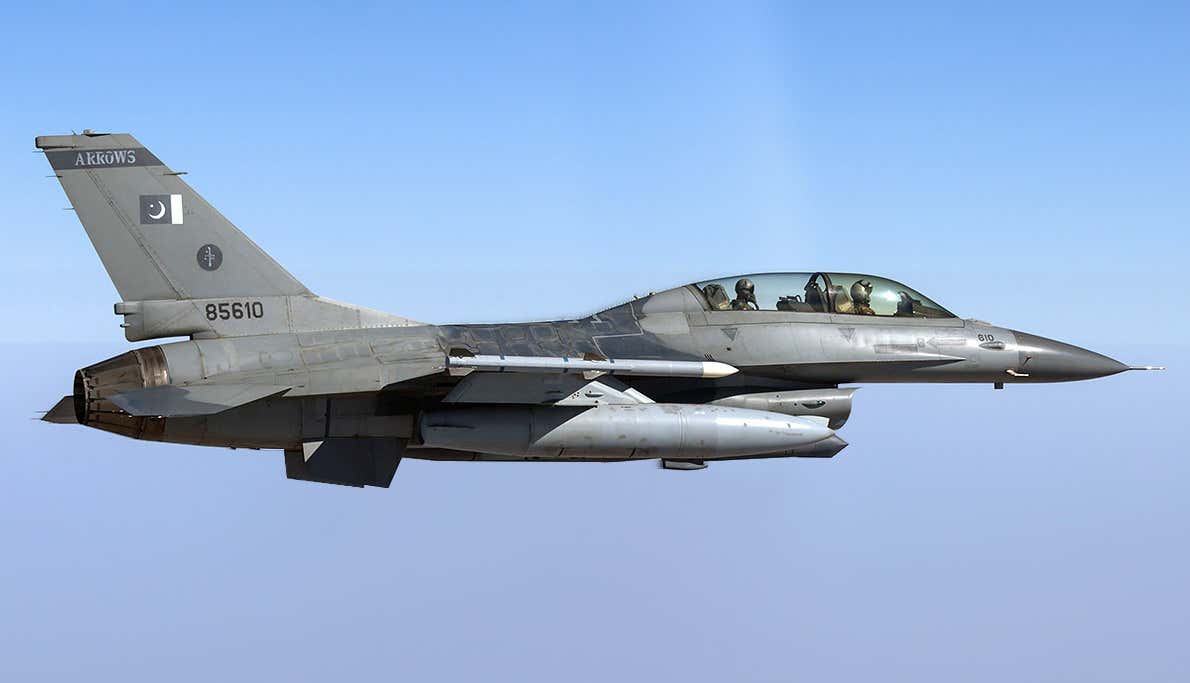
ASUSPINE/WIKICOMMONS
A Pakistani Air Force F-16B Viper.
In a more recent interview with The Hot Wash YouTube show, which is hosted by another veteran of the 160th Special Operations Aviation Regiment (SOAR), Alex Bertelli, Englen again touched on the historic mission and offers new details on how he and his teammates evaded the prowling Pakistani F-16. He specifically credits the U.S. Marine Corps’ Weapons and Tactics Instructor (WTI) Course, which is hosted by Marine Aviation Weapons and Tactics Squadron One (MAWTS-1), as having played a critical part in ensuring he bought his MH-47G and crew home safely.
“The biggest thing is they teach you how to fly [...] a helicopter against an adversary, [sic] a jet. So air-to-air combat,” he explained. “Air-to-air combat with a jet and a helicopter, [and] helicopter to helicopter. Those are the techniques that brought myself and the crew home on the evening of May 1, 2011.”
Englen flew with the 160th SOAR, also known as the “Nightstalkers,” between 1998 and 2020, and he accrued an astonishing 2,500-plus missions with this elite unit, making him one of its most experienced aviators, ever. Englen was a lead planner for the Bin Laden raid, and he says that losing an aircraft was one of the primary concerns. He calls the WTI course the “TOPGUN of the Marines,” and explains that the 160th is allowed to attend the three-month course as a guest unit to enable “Nightstalker” crews to learn how to be Tactics Instructors.
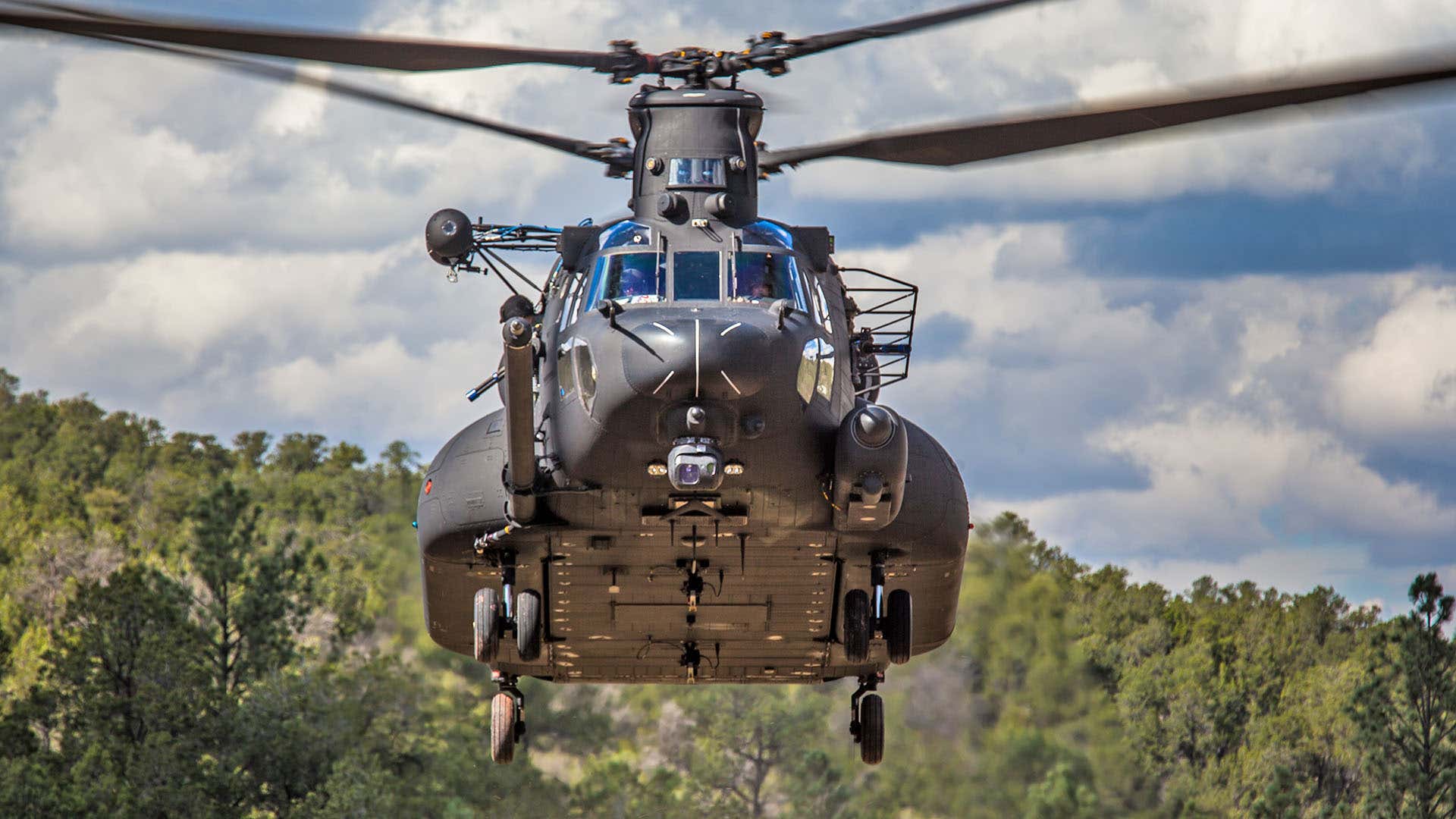
U.S. ARMY/SSGT REED KNUTSON
An MH-47G of the 160th SOAR.
In an exclusive exchange with The War Zone, Chief Warrant Officer Englen further explains how he came to attend the WTI course and the associated benefits to the U.S. Army:
TWZ: How did you end up at WTI? Is the 160th SOAR a usual participant?
DE: I was insisted by my Battalion Commander to attend with an entire crew [two pilots and two crewchiefs] with an MH-47E in order to learn tactics and train 160th Chinook crews. The 160th and WTI has had a long-standing exchange aviator partnership.
TWZ: What was different about the training evolution compared to those you had taken part in in the past? Does the U.S. Army have anything similar to WTI?
DE: The training evolutions in the past have been short in duration covering similar courseware, but not at the level of long-term dedication (three-month-long courses at WTI). The Army has somewhat similar classroom training courses but doesn’t have the application stage. The Army does standardize the operational flight lead and air mission commander qualifications like WTI.
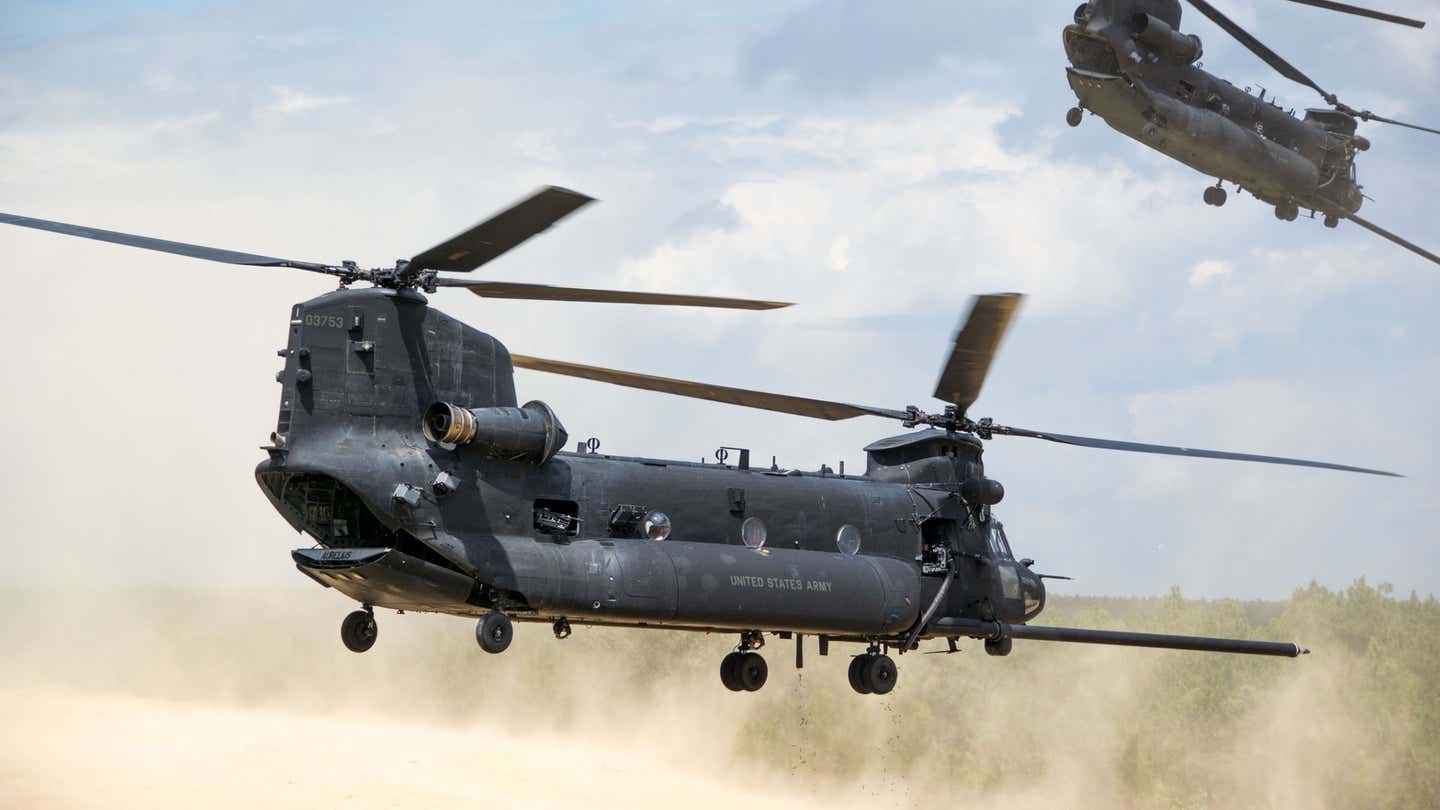
US ARMY
MH-47s during a training sortie.
TWZ: What type of defensive air-to-air tactics do they cover? How can a helicopter defend itself against a fighter and other threats?
DE: Air-to-air defense tactics are covered both academically and dynamically [hands-on]. We take our helicopter and fly it against other helicopters and jets to practice in teams. Multiple scenarios [head-on, offset, rear, etc] are developed to cover all aspects. Helicopters don’t have much for air defense other than terrain masking and concealment.
TWZ: Does the Army have a similar air-to-air syllabus or training evolution? How do the Marines train differently than the Army in regard to helicopter tactics?
DE: The Army only covers academic tactics courses. In fact, the Army consistently sends Army personnel to WTI because of the application phase. The Army course trains primarily electronic warfare and missile defense spectrums. Not the detailed flight lead and air mission commander designations/qualifications.
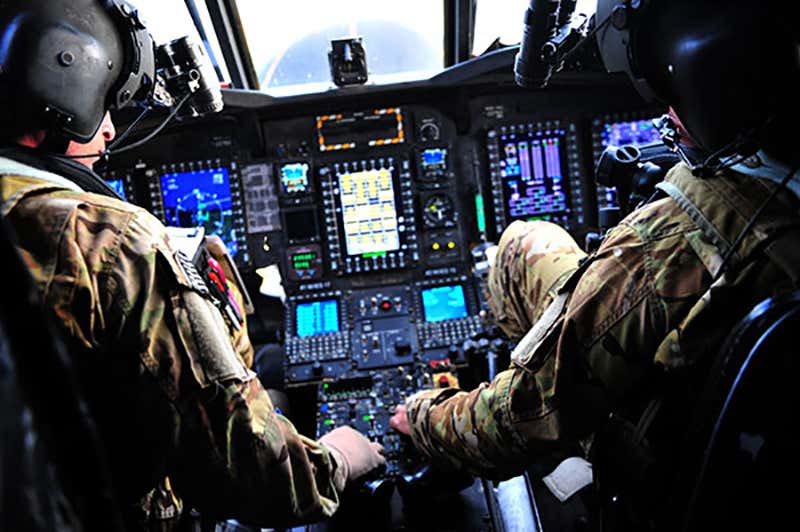
DOD
MH-47 cockpit.
TWZ: This training ended up proving itself extremely useful. How did it translate into real-world operations?
DE: WTI teaches that relying on the basics is critical. Then blend in technology to gain a competitive advantage. The basics are what saved my life in many situations.
TWZ: Do you think this training should be standard for all military combat helicopter pilots?
DE: Absolutely. But, this is very resource-intensive. The Marine Corps has made this a priority, which I think the Army should as well and let the trainers train at the unit level. The scale is much larger for the Army, but would be beneficial if tactics could be training ‘hands-on’.
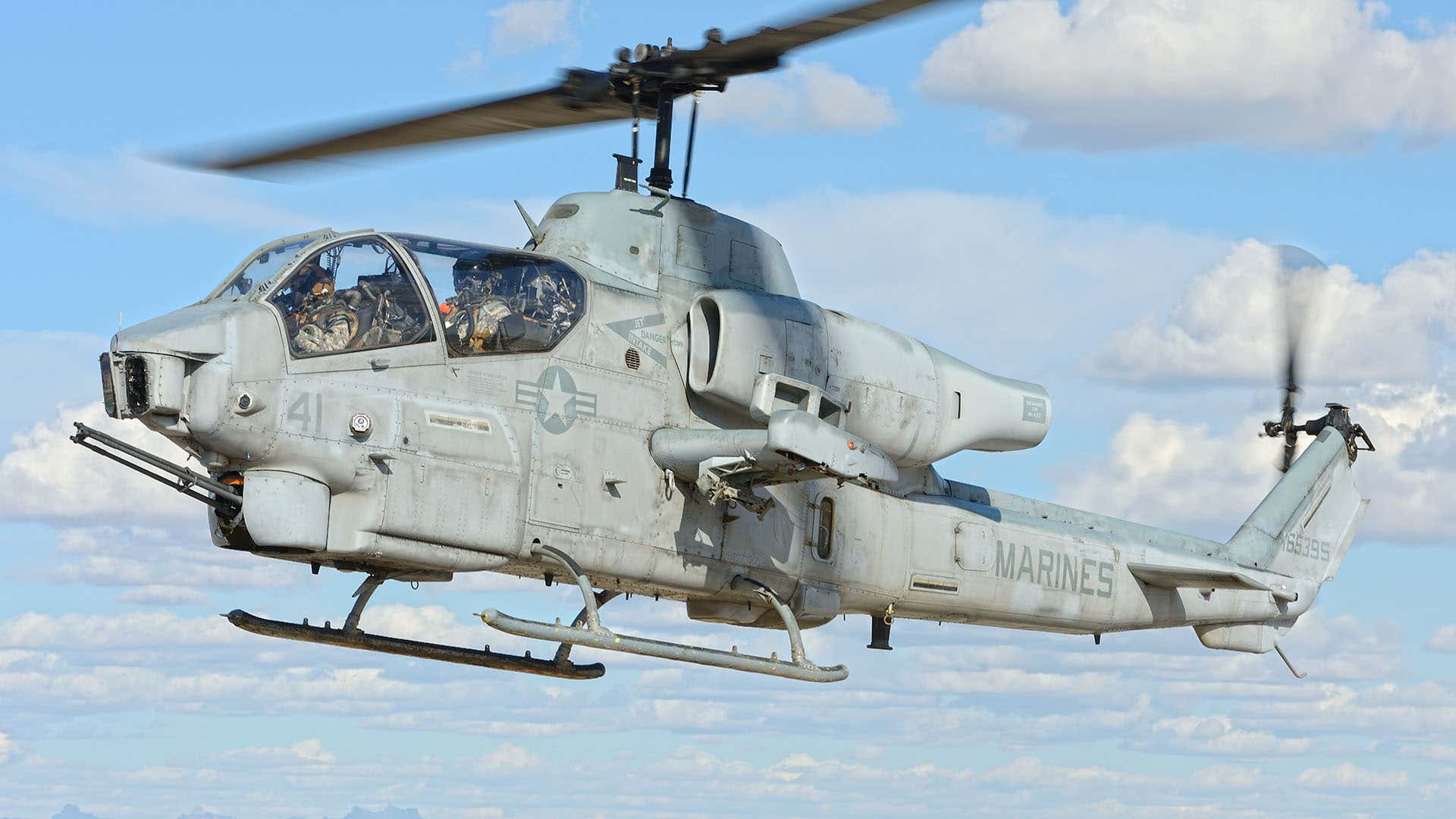
JAMIE HUNTER
The Weapons and Tactics Instructor Course at MCAS Yuma included the AH-1W in the past, but has now consolidated on the newer AH-1Z.
The WTI course at Marine Corps Air Station Yuma in Arizona continues to teach crews from all over the Marine Corps, including heavy-lift helicopters, such as Marine CH-53s, as well as those of attack/escort types such as the AH-1 Cobra, and select visiting units in all areas of tactical employment. The last AH-1W WTI course was completed in 2019, and the Cobra syllabus now concentrates on the newer AH-1Z.
“Air-to-air tactics were taught not only at MAWTS-1 in Yuma, Arizona, but also by squadron WTIs,” a retired U.S. Marine Corps AH-1 Cobra Weapons and Tactics Instructor told The War Zone in a separate interview. “Evasive maneuvering was also taught, but mostly to the transport helicopters. We flew against Marine and Navy fixed-wing. Cobras were expected to protect the transports against all threats to include enemy jet fighters.”
“I retired in 2002, but remember the Defensive Air Combat Maneuvering [DACM] training. I always enjoyed these flights and especially the debriefing with our adversaries. Cobras were always underestimated and we enjoyed busting the jet guy’s bubble,” said the pilot. “As a young 1st Lieutenant in the mid-1980s, I remember when our AH-1J Cobras received the AIM-9 Sidewinder air-to-air missile modification. The air-to-air warfare training had just begun,” he added, referring to his old unclassified AH-1W Tactics Manual.
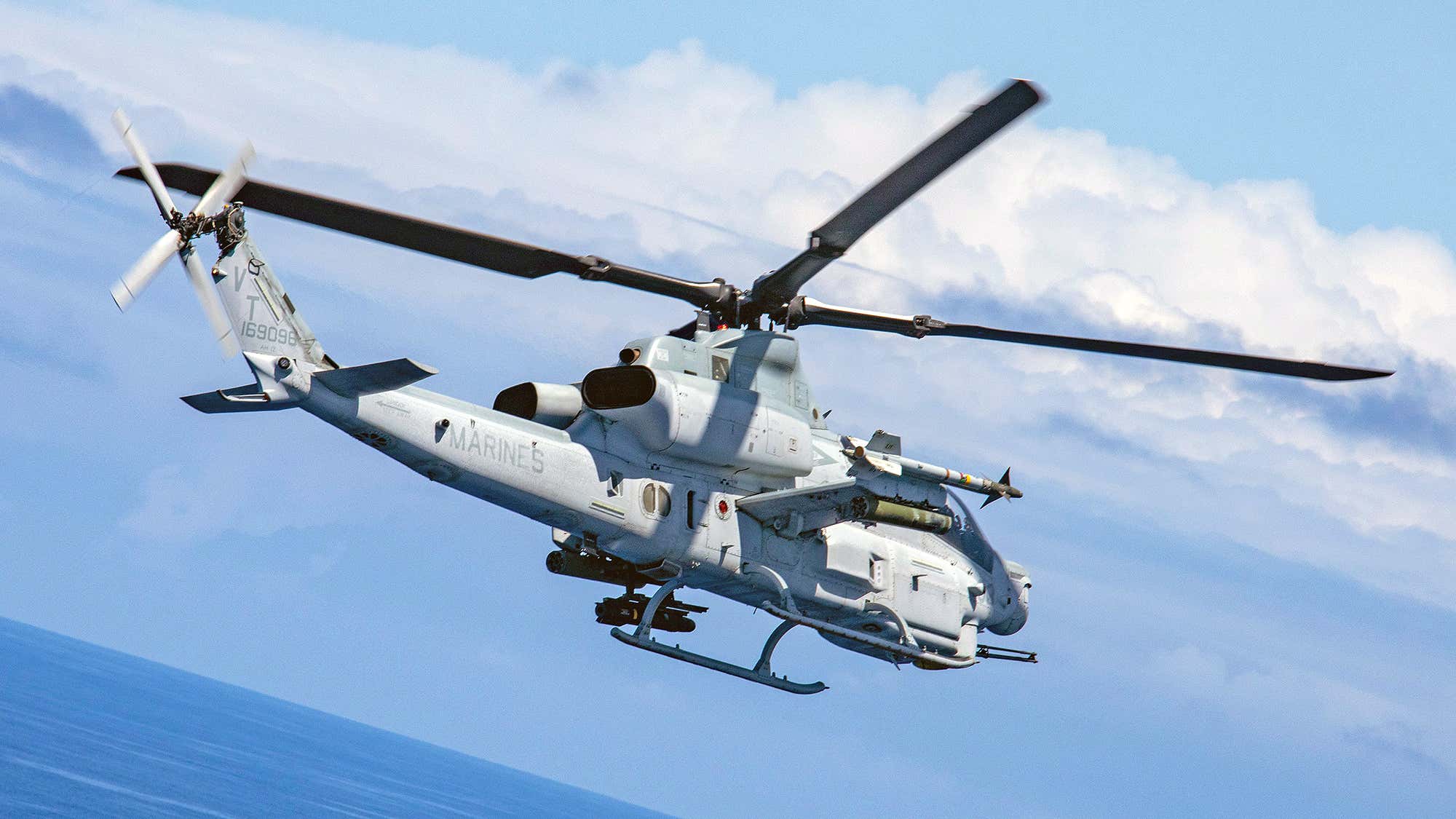
USMC
An AH-1Z carries a live Sidewinder on its stub-wing tip rail. The importance of rotary-wing counter-air missions has increased recently due to threats from a more diverse set of airborne platforms, including drones.
“There were many training detachments from Marine Corps Air Station Camp Pendleton, California that were specifically for Cobra-versus-helicopter DACM and Cobra-versus-fixed-wing fighters, he continued. “In fact, Marine Cobras were the first U.S. attack helicopters to have this capability, perhaps the world’s first? All of our tactics manuals were updated to include air-to-air warfare, but these were initially all F-4 Phantom II tactics and all of the diagrams were F-4s, not Cobras!”
“We found that helicopter-versus-helicopter — aircraft with similar capabilities — greatly heightened the variables,” he recalled. “Maintaining energy, maneuvering your section [flight of two], or division [flight of four], to provide mutual support became very important. Helicopter-on-helicopter reminded me of the World War I dogfights but flown much much closer to the ground. While we were armed with a turreted 20mm cannon; its slow rate of fire made it a poor air-to-air weapon. Our 2.75-inch rockets could be used like a shotgun!”
Author's Note: the rate of fire of the AH-1W's M197 cannon is fixed at 650 rounds per minute.
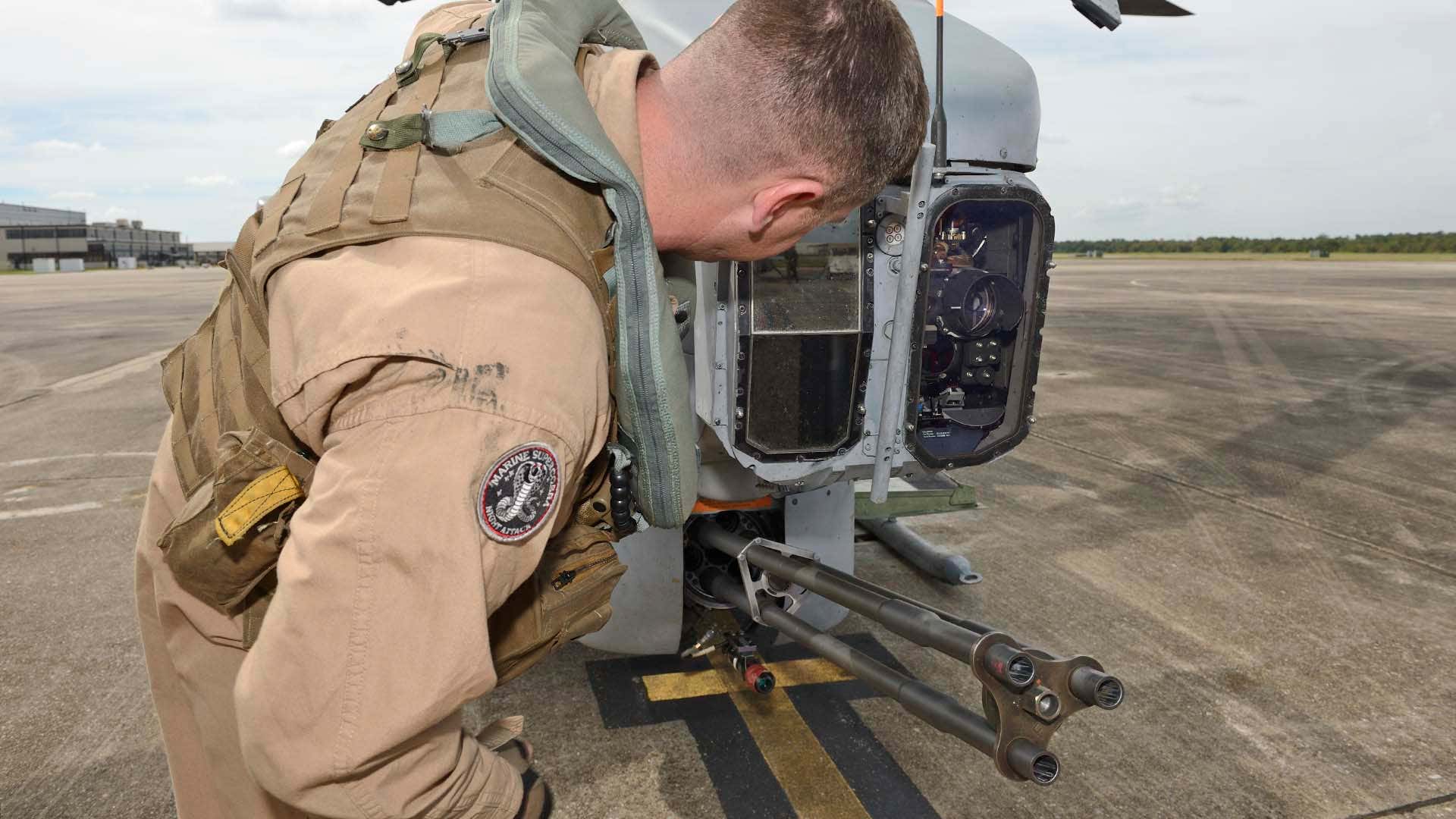
JAMIE HUNTER
An AH-1W pilot checks the M197 cannon.
Fully understanding the strengths and weaknesses of opposing aircraft is extremely important in DACM, and these details were very much limited to the classified version of the tactics manual. The AH-1 Cobra's greatest advantage over a fixed-wing aircraft was the turn capability. “A helicopter can out-turn any fixed-wing aircraft,” the pilot explained. He adds that a big advantage for the rotary-wing crews was the lack of training that fixed-wing crews had versus helicopters in this kind of engagement.
“Generally, they greatly underestimated our training and capabilities. Our use of the terrain helped limit the jet’s air-to-air missile capabilities and often gave us the advantage of seeing them first,” he said. “The greatest weapon that a jet could use against us was their bombs! They would try to frag us. Their best option was to make one bombing pass. If they made the mistake of making repeated passes, or trying to engage us in a turning fight, they were in for a surprise.”
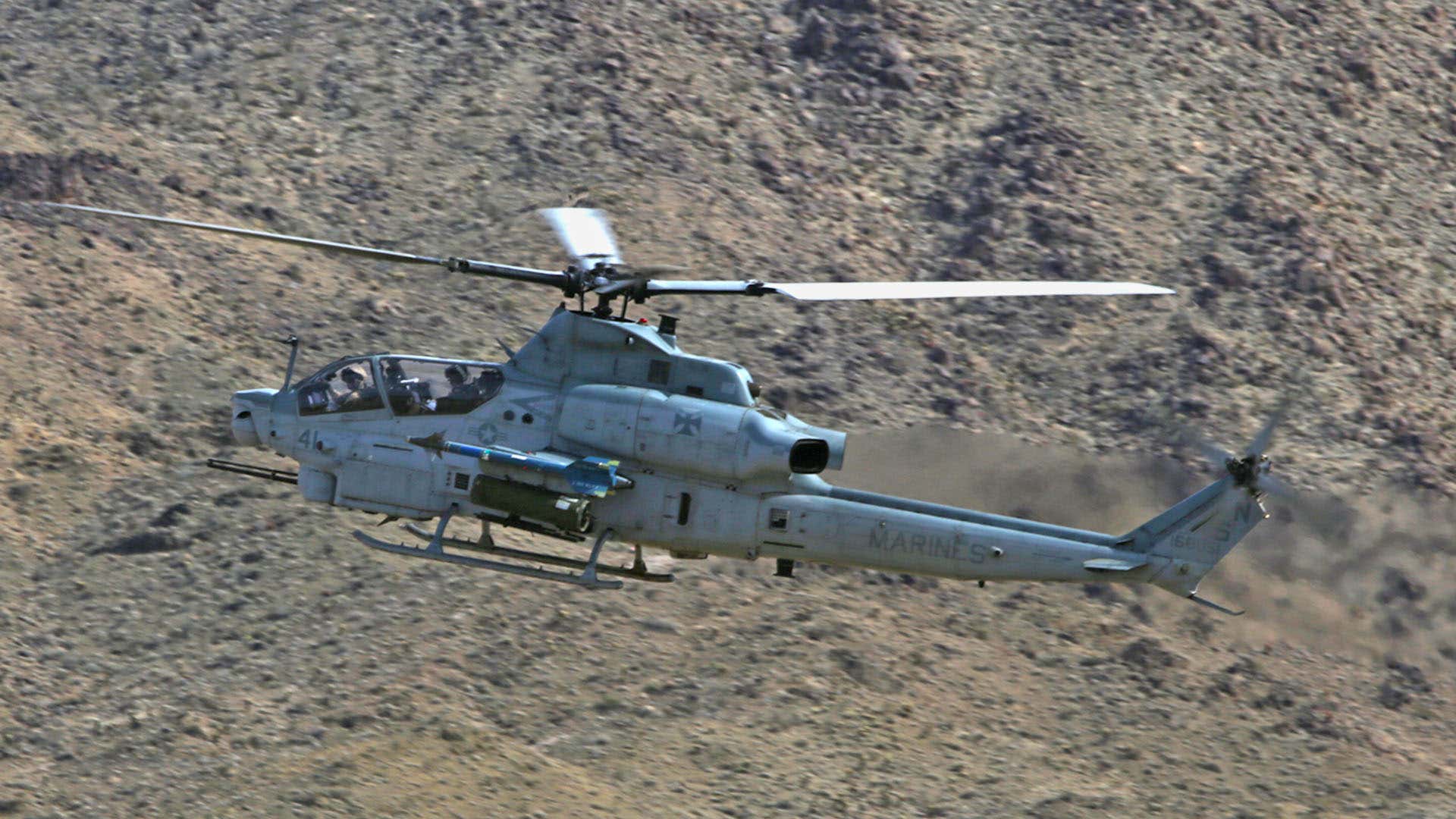
U.S. MARINE CORPS/LCPL ERYN RUDOLPH
An AH-1Z carrying an inert AIM-9L Sidewinder.
The AH-1’s best chance of successfully employing its two AIM-9 Sidewinders in a head-to-head pass because a fighter might be able to outrun a tail shot.
Fighter pilots tend to be exposed to very limited opportunities to regularly practice techniques against large transport aircraft or helicopters. Both the transport aircraft and the helicopters can employ clever bespoke tactics that can bring sufficient spacing or terrain into play to help evade the enemy.
As was partly the case in the Bin Laden raid, electronic countermeasures also play an increasing role in these types of engagements, although traditional flying tactics and techniques can still be used to help achieve the desired effect.
For Douglas Englen, a combination of the two appears to have saved his MH-47G and the personnel inside on that dark night over Northern Pakistan, thanks in part to the Marine Corps' Weapons and Tactics Instructor Course. We can only wonder what would have been if he never received this unique training. What went down in the history books as an incredibly successful mission and a cultural touchstone, could have become known for far less triumphant reasons.
No comments:
Post a Comment